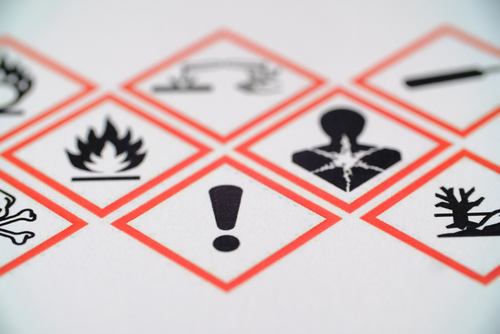
When it comes to workplace safety, proper handling of hazardous materials is of utmost importance. Whether it’s fuel, asbestos, lead, or mercury, workers must be equipped with the knowledge and skills to handle these substances safely. In this guide, we will explore the best practices for working with hazardous materials, including identifying and documenting them, understanding Safety Data Sheets (SDSs), and receiving proper training. By following these guidelines, workers can mitigate the risks associated with hazardous materials and ensure a safe working environment for themselves and their colleagues.
Identifying and Documenting Hazardous Materials
One of the first steps in working safely with hazardous materials is to identify and document them. Before starting any work, it is crucial to conduct a thorough assessment of the materials that will be used or encountered. This assessment should include a comprehensive list of all hazardous materials involved.
Listing on the Daily Safe Work Permit
To ensure proper documentation, all hazardous materials should be listed on the Daily Safe Work Permit. This permit serves as a record of the materials present in the workplace and helps to raise awareness among workers. By including hazardous materials on the permit, everyone on-site will be informed about their presence and can take appropriate precautions.
Documenting the Job Safety Analysis (JSA)
In addition to listing hazardous materials on the Daily Safe Work Permit, it is essential to document their handling on the Job Safety Analysis (JSA). The JSA provides a detailed overview of the tasks involved in a particular job and identifies potential hazards. By carefully documenting how hazardous materials will be handled on the JSA, workers can ensure that they have a clear understanding of the risks involved and can take appropriate measures to mitigate them.
Notifying Clients
If any hazardous materials are discovered during the assessment or while working on-site, it is crucial to notify the clients immediately. Prompt communication with clients is essential to ensure their safety as well. By informing them about the presence of hazardous materials, clients can take necessary precautions and make informed decisions regarding their involvement in the project.
Understanding Safety Data Sheets (SDS’s)
Safety Data Sheets (SDSs) play a vital role in working safely with hazardous materials. They provide detailed information about the properties, hazards, and safe handling procedures of the materials. Workers should review the SDSs before starting any work and ensure that they are readily available in case of an emergency.
Listing SDSs on the JSA
To ensure easy access to SDSs, it is important to list them on the Job Safety Analysis (JSA) for all materials used. This ensures that workers have quick access to the necessary information and can refer to it whenever needed. By including SDSs on the JSA, workers are reminded of the potential hazards associated with the materials and can take appropriate precautions.
Discussing SDSs with the Crew
It is not enough to have SDSs listed on the JSA; workers must also discuss them with their crew. By engaging in discussions about the SDSs, workers can ensure that everyone understands the emergency procedures and has a clear plan or procedure in place. This promotes a collaborative approach to safety and ensures that everyone is on the same page when it comes to handling hazardous materials.
Training and Resources
Proper training is essential for working safely with hazardous materials. Workers should actively seek out training opportunities to enhance their knowledge and skills. By staying up to date with the latest industry practices and regulations, workers can effectively mitigate the risks associated with hazardous materials.
WHMIS Training
One valuable training resource is the Workplace Hazardous Materials Information System (WHMIS). WHMIS provides workers with the knowledge and skills needed to handle hazardous materials safely. Through WHMIS training, workers learn about the different hazard classes, labeling requirements, and safety data sheets. This training equips them with the necessary tools to identify and handle hazardous materials in a safe and responsible manner.
CCOHS Workplace Safety Training
The Canadian Centre for Occupational Health and Safety (CCOHS) offers a wide range of workplace safety training programs. These programs cover various topics, including hazardous materials handling. Workers should take advantage of these training opportunities to enhance their understanding of the risks associated with hazardous materials and learn how to minimize those risks. By investing in proper training, workers can ensure their own safety and the safety of their colleagues.
Worksite Safety
Worksite Safety offers a variety of online training, including WHMIS, Asbestos Awareness, and H2S. You can access these courses through the POST website.
Conclusion
Working with hazardous materials requires caution, knowledge, and proper training. By accurately identifying and documenting hazardous materials, understanding Safety Data Sheets (SDSs), and receiving adequate training, workers can mitigate the risks associated with these substances. It is essential to prioritize safety at the workplace and ensure that everyone involved is well-informed and equipped to handle hazardous materials responsibly. By following the guidelines outlined in this guide, workers can create a safer working environment and protect themselves and their colleagues from potential harm.
Remember, when it comes to hazardous materials, safety should always be the top priority.
